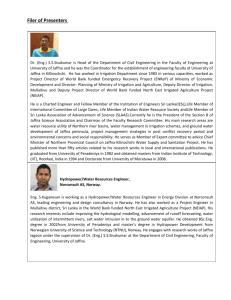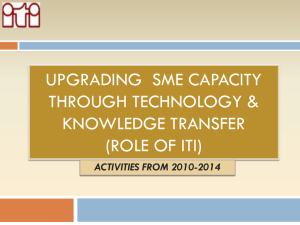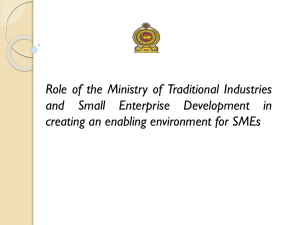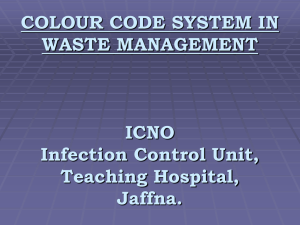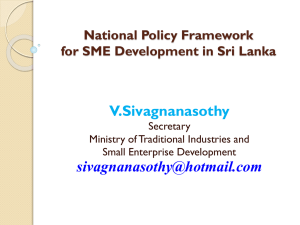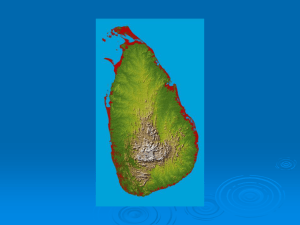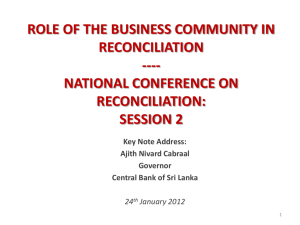Jaffna and Kilinochchi Water Supply and
advertisement
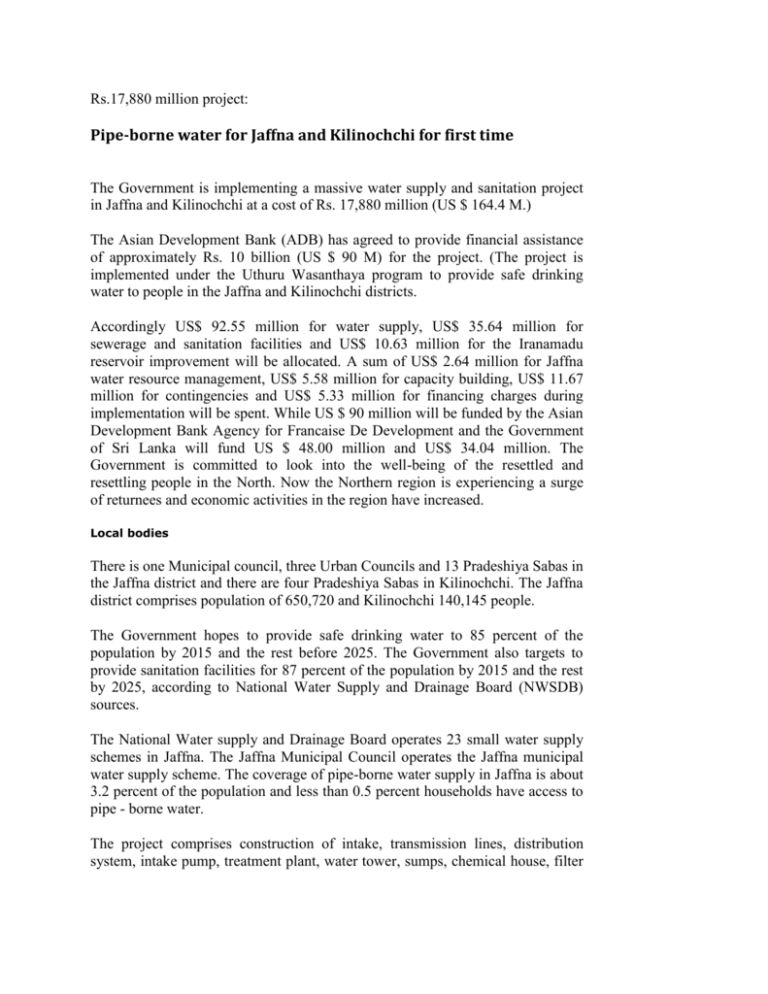
Rs.17,880 million project: Pipe-borne water for Jaffna and Kilinochchi for first time The Government is implementing a massive water supply and sanitation project in Jaffna and Kilinochchi at a cost of Rs. 17,880 million (US $ 164.4 M.) The Asian Development Bank (ADB) has agreed to provide financial assistance of approximately Rs. 10 billion (US $ 90 M) for the project. (The project is implemented under the Uthuru Wasanthaya program to provide safe drinking water to people in the Jaffna and Kilinochchi districts. Accordingly US$ 92.55 million for water supply, US$ 35.64 million for sewerage and sanitation facilities and US$ 10.63 million for the Iranamadu reservoir improvement will be allocated. A sum of US$ 2.64 million for Jaffna water resource management, US$ 5.58 million for capacity building, US$ 11.67 million for contingencies and US$ 5.33 million for financing charges during implementation will be spent. While US $ 90 million will be funded by the Asian Development Bank Agency for Francaise De Development and the Government of Sri Lanka will fund US $ 48.00 million and US$ 34.04 million. The Government is committed to look into the well-being of the resettled and resettling people in the North. Now the Northern region is experiencing a surge of returnees and economic activities in the region have increased. Local bodies There is one Municipal council, three Urban Councils and 13 Pradeshiya Sabas in the Jaffna district and there are four Pradeshiya Sabas in Kilinochchi. The Jaffna district comprises population of 650,720 and Kilinochchi 140,145 people. The Government hopes to provide safe drinking water to 85 percent of the population by 2015 and the rest before 2025. The Government also targets to provide sanitation facilities for 87 percent of the population by 2015 and the rest by 2025, according to National Water Supply and Drainage Board (NWSDB) sources. The National Water supply and Drainage Board operates 23 small water supply schemes in Jaffna. The Jaffna Municipal Council operates the Jaffna municipal water supply scheme. The coverage of pipe-borne water supply in Jaffna is about 3.2 percent of the population and less than 0.5 percent households have access to pipe - borne water. The project comprises construction of intake, transmission lines, distribution system, intake pump, treatment plant, water tower, sumps, chemical house, filter back washing system and process control units, The sewerage and sanitation project consists of a treatment plant, pump house, sea-outfall and network line. Head work improvement, rehabilitation of sluice gate, raising bunt by 2 feet and provision of new technology to farmers implemented under the Iranamadu project. On the completion of the project over 60,000 connections will be provided in the Jaffna and Kilinochchi districts and 300,000 people will benefit. Over 20,000 connections people in the Jaffna Municipal Council area and 80,000 people in the area will benefit from the project. Sanitation facilities to over 50,000 people in Jaffna and Kilinochchi districts will be provided, NWSDB sources said. The Government has identified developing the Northern and Eastern provinces and eliminating inter-regional inequalities as key factors for long-term peace. Since the end of the conflict, substantial progress has been made in addressing challenges and security concerns. Welfare centres The displaced people were accommodated in 32 welfare centres and by October 2010, less than 23,000 remained in the welfare camps. Those remaining in welfare centres will be resettled shortly after the completion of the ongoing demining activities. The Government has implemented mega infrastructure and livelihood development projects in the North to restructure and rehabilitate the North and East devastated by terrorism. The Jaffna Peninsula lagged in economic growth as fish processing and key industries were destroyed. Investments have been low, less maintenance of infrastructure facilities and key industries, such as agriculture and fishing have been abandoned. Poverty is the most pressing issue in Jaffna. The level of poverty in the Northern Province is estimated to be 37%, compared to 15% in the rest of the country. Provision of basic needs will complement Government efforts to promote sustainable livelihoods, improve access to markets, and increase employment in the Northern Province. The Jaffna peninsula depends primarily on groundwater. The project is in line with the Government's 10-year development plan to increase access to water and sanitation facilities. It is also in consistent with the country partnership and strategy of the ADB which aims to achieve socially inclusive development by expanding access to clean water and other services and to assist poor households in establishing links to water supply systems. The project categorized as environmental category B and an Initial Environmental Examination (IEE) with a detailed Environmental Management Plan (EMP) was designed in accordance with ADB's Safeguards Policy Statement (2009). The protection of the fragile aquifer, improved next of hygiene and sanitary facilities, waste water treatment and disposal, ecosystem are some of the benefits of the project. Mitigation measures and monitoring plans have been proposed in the EMP. The EMP will be implemented and monitored by the PMCIU. Project engineering and institutional consultants will assist the PMCIU in ensuring the implementation of the EMP. The main objectives of the project are to improve water supply services in the Jaffna and Kilinochchi districts, provide sanitation facilities for residents in the Jaffna Municipal Council area and strengthen the water resources management program in the Jaffna peninsula. The International Fund for Agricultural Development (IFAD) has agreed to provide a loan of Rs. 2,180 million (US$ 20 million) for the downstream development of the Iranamadu Tank.
